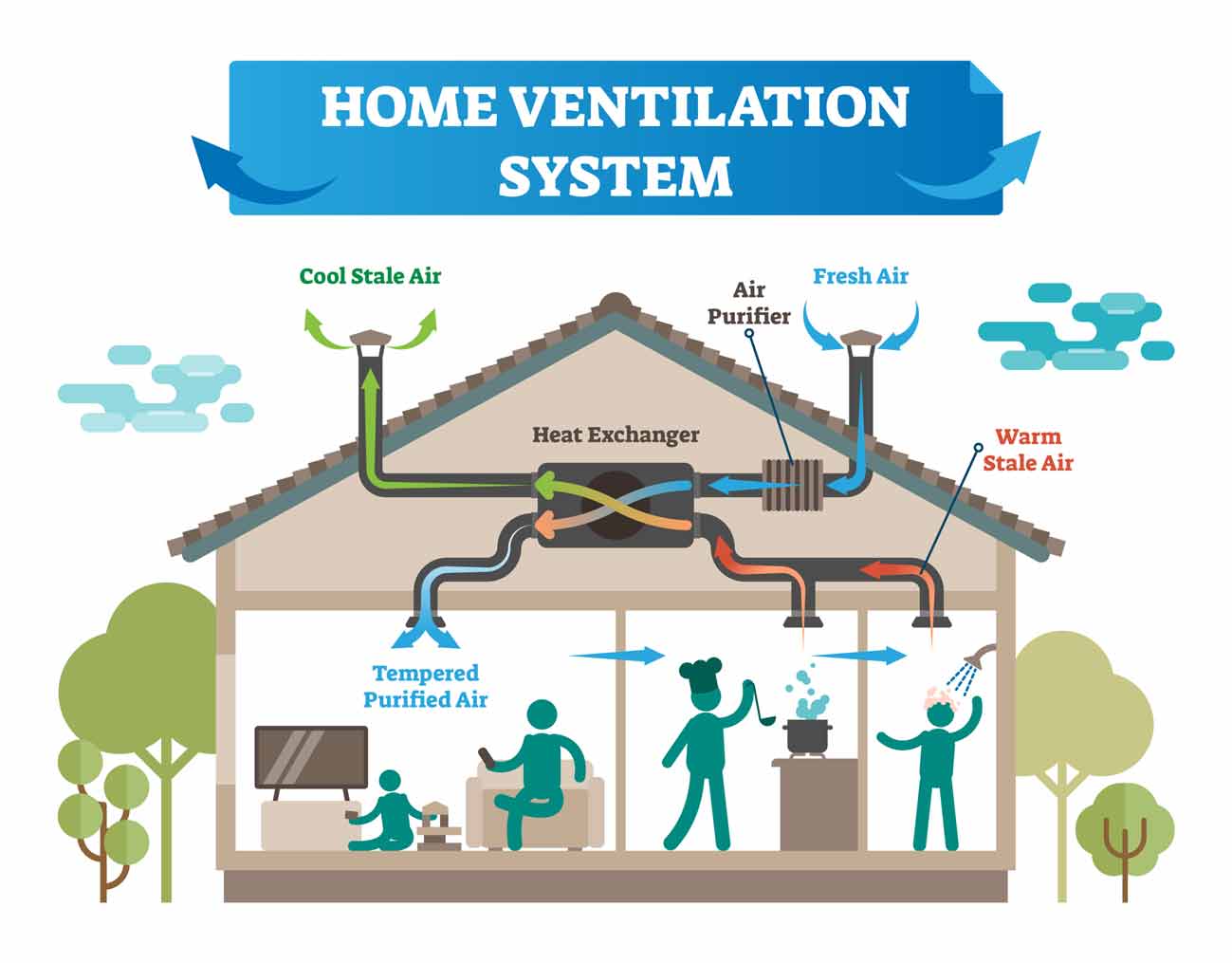The Most Common Questions Homeowners Ask About HRV
The All-Inclusive Overview to the Uses of Heat Recovery Ventilation in Modern Buildings
Heat Recovery Ventilation (HRV) systems stand for a substantial innovation in developing technology (HRV Heat Recovery Ventilation). They supply a method for trading stale interior air with fresh outdoor air while lessening power loss. This strategy not just enhances interior air top quality however additionally adds to power efficiency in both household and industrial structures. Comprehending the numerous applications and benefits of HRV can disclose its crucial duty in modern layout and sustainability efforts. The effects of this innovation deserve discovering even more
Recognizing Heat Recovery Ventilation Equipments

Lots of modern-day buildings prioritize energy performance, understanding heat healing air flow (HRV) systems is important for maximizing indoor air high quality and minimizing energy usage. HRV systems work by transferring heat from stagnant indoor air to inbound fresh air, efficiently maintaining comfy indoor temperature levels while reducing energy loss. These systems contain a warm exchanger, followers, and ductwork that assist in the flow of air. During winter months, HRV devices record and recycle heat from the outgoing air, while in summer, they can help cool incoming air. By constantly exchanging air, HRV systems also reduce moisture and the focus of indoor pollutants. Proper installment and upkeep of HRV systems are necessary for their effectiveness and efficiency in enhancing overall structure performance and convenience.
Advantages of Heat Recovery Ventilation
Heat recovery ventilation systems use many benefits that boost both power efficiency and interior air high quality in contemporary structures. By recording and recycling energy from exhaust air, these systems considerably reduce heating & cooling costs, bring about lower energy consumption. They maintain a constant circulation of fresh exterior air, reducing the threat of indoor air toxins and allergens. This continual exchange helps control humidity levels, stopping mold growth and making certain a healthier living setting. Additionally, HRV systems add to sustainability objectives by decreasing general carbon impacts. Their capacity to optimize air flow without sacrificing thermal convenience makes them an important enhancement to modern building style, promoting both financial and ecological benefits.
Applications of HRV in Residential Structures
As homeowners progressively focus on power efficiency and indoor air high quality, the applications of warmth healing ventilation (HRV) systems in domestic buildings have actually come to be a lot more widespread. HRV systems are particularly advantageous in snugly sealed homes, where keeping fresh air blood circulation is essential for preventing wetness build-up and indoor contaminants. They successfully move heat from outbound stagnant air to incoming fresh air, minimizing energy prices connected with home heating and air conditioning. Additionally, HRVs can enhance comfort degrees by managing moisture and temperature. They are likewise versatile for different property layouts, consisting of single-family homes and multi-unit structures. Generally, incorporating HRV systems supports sustainable living practices while making certain a much healthier interior setting for occupants.
HRV in Commercial and Industrial Settings
In commercial and industrial setups, the implementation of heat recuperation air flow (HRV) systems has ended up being increasingly crucial for maximizing energy efficiency and preserving air high quality. These systems properly move heat from exhaust air to inbound fresh air, minimizing the requirement for additional home heating or air conditioning. This not only decreases power expenses but additionally click here for more adds to sustainability initiatives. Industries such as production, warehousing, and workplace buildings benefit significantly from HRV systems, as they assist control temperature and moisture levels, making sure a comfortable and effective atmosphere. Additionally, HRV systems help in eliminating impurities and excess wetness, enhancing interior air high quality. As laws around air quality come to be stricter, the fostering of HRV innovation is likely to expand, making it a critical component of contemporary commercial and industrial infrastructure.
Future Patterns in Heat Recovery Ventilation Technology

Often Asked Concerns
Just How Does Heat Recovery Ventilation Influence Indoor Air Top Quality?
Heat recovery ventilation substantially enhances indoor air quality by continually trading stagnant indoor air with fresh outdoor air while recouping power. This process decreases pollutants, maintains suitable moisture levels, and guarantees a much healthier atmosphere for passengers.
Can HRV Equipments Be Set Up in Existing Buildings?
HRV systems can indeed be mounted in existing buildings. Retrofitting may call for alterations to ductwork and ventilation formats, however it significantly improves power efficiency and interior air quality, making it a sensible choice find for older structures.
What Upkeep Is Required for HRV Equipments?

Exist Certain Climates Where HRV Is Much More Reliable?
Heat recovery ventilation systems are especially effective in environments with considerable temperature level distinctions between periods. These systems optimize power performance by recovering warm from exhaust air, making them optimal for both chilly and moderately cozy environments.
Exactly How Do HRV Systems Affect Power Bills?
